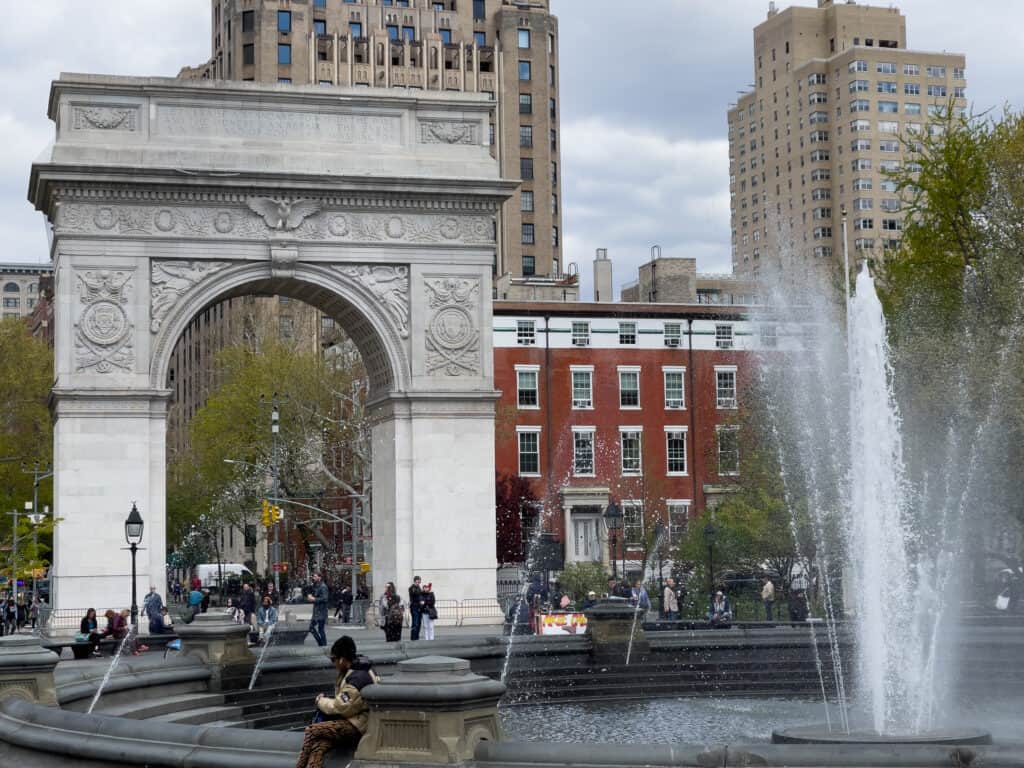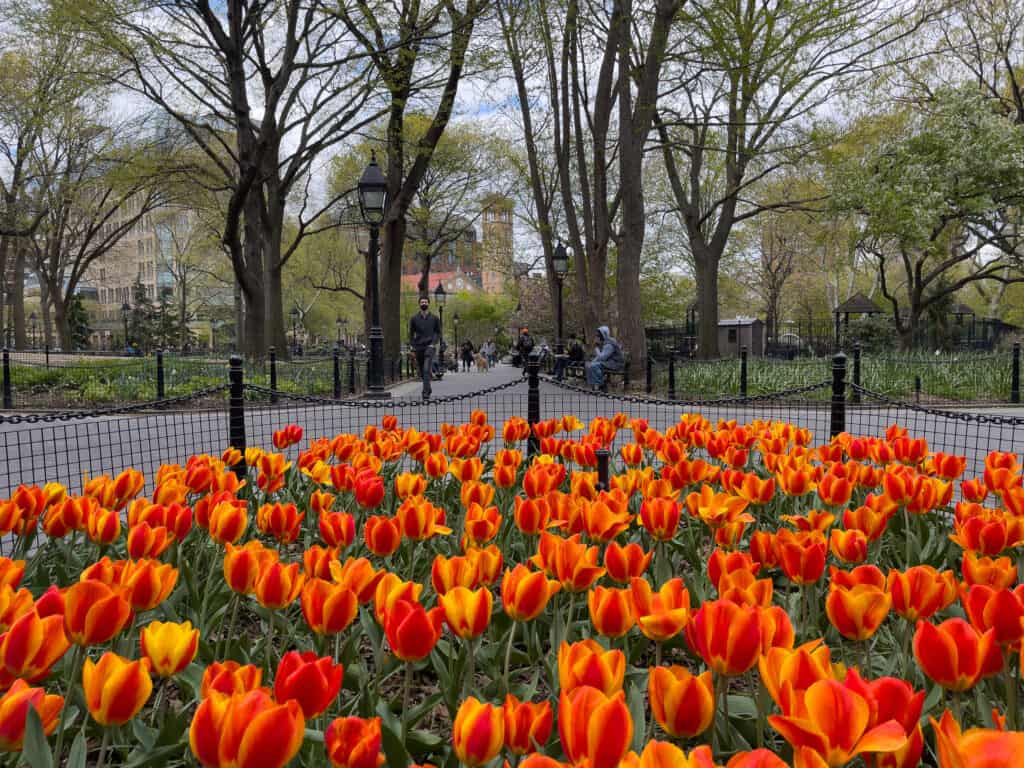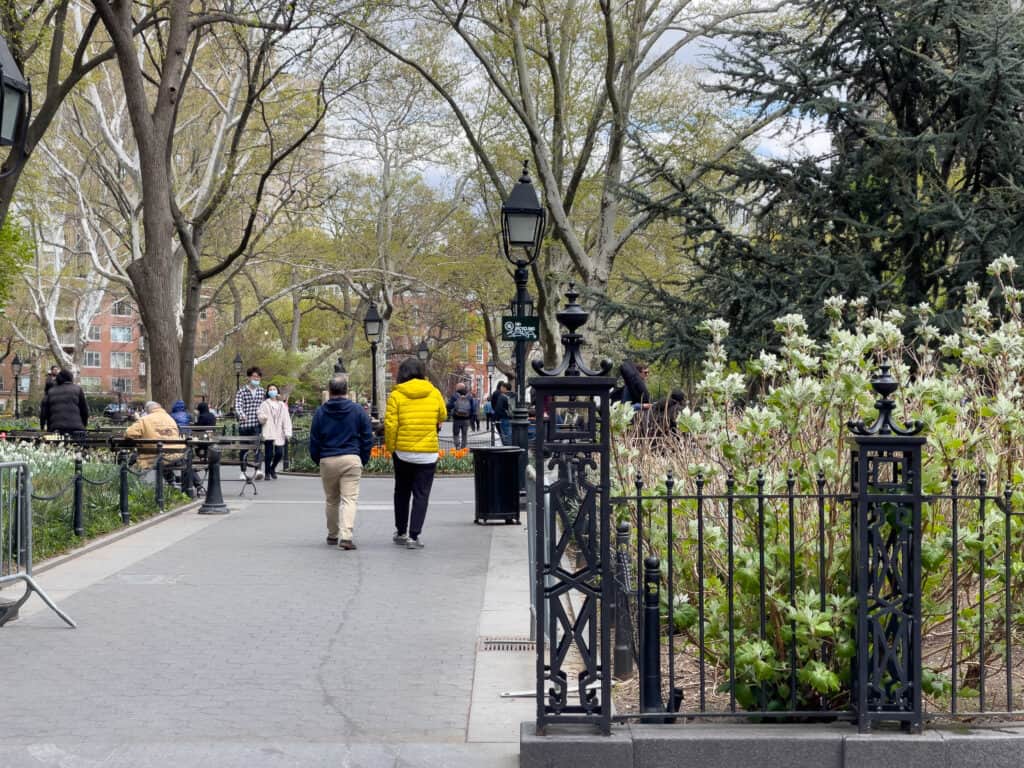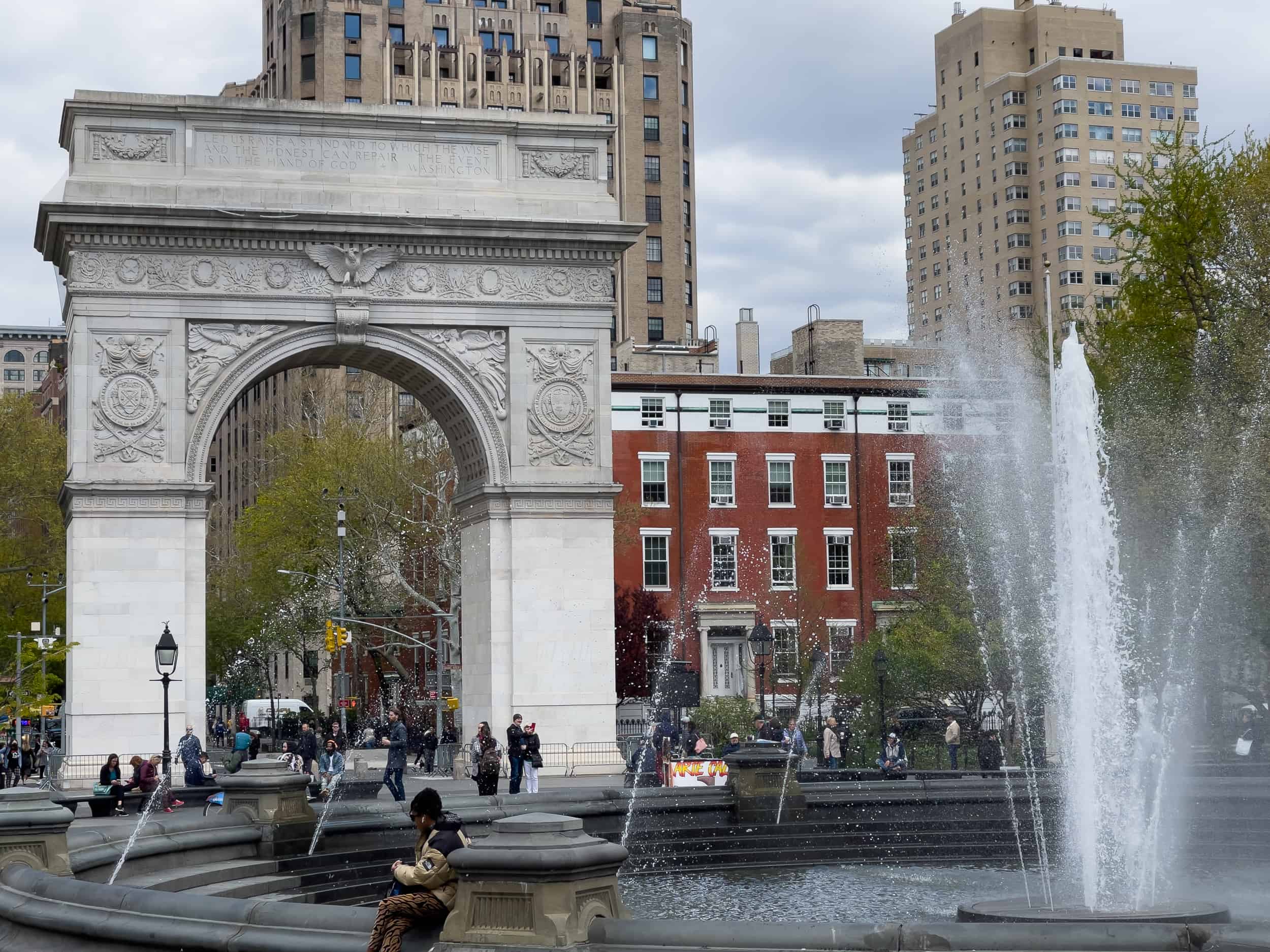Checking in at just-under 10 acres in size, Washington Square Park is nowhere near the biggest park you’ll encounter in New York, but it’s most definitely one of the most important public spaces in the city. Rich in history, Washington Square Park has been a place of gathering for generations of New Yorkers, as well as a mecca for artists, activists, students, and people of diverse backgrounds and experiences across the decades—all while being featured in numerous movies over the years.

Washington Square Park History
The first European development of what is now Washington Square Park occurred after the Revolutionary War when, remarkably enough, the land was made into a public burial ground for New York City’s poorest individuals—including many who had perished from yellow fever. As Manhattan grew and evolved, the area played a number of roles, including for a time serving as a parading ground and drilling station for the local militia.
By the middle of the 19th Century, the surrounding area had become a fashionable neighborhood for New York’s wealthy elites and the home of New York University. Prominent artists such as Winslow Homer, Henry James, and Samuel Morse lived and worked here, too, and Washington Square Park was transitioned into an early version of the public space we know and love today. It’s undergone several renovations over the ensuing decades, but its role as a meeting place for people from all over the world has remained through everything.
What’s at Washington Square Park

Probably the most famous feature of Washington Square Park is the Washington Arch. Designed by the architect Stanford White, who modeled his work on Rome’s fabled Arch of Titus, the Washington Arch was built to honor the centennial of George Washington’s presidency. Made of marble, it was completed in 1891, and ever since has stood as a symbol of the neighborhood while functioning as the southern end of Fifth Avenue.
Another popular spot in Washington Square Park is its central fountain. If you’ve got little ones in tow, it’s a wonderful place to set them free for some splashing; or, if you’re just out and about for a stroll, it’s a perfect locale for people watching. Regardless, given the fountain’s symmetry with the Washington Arch, this is arguably the photo op for the entire park experience.
Throughout the park there are many fascinating monuments worth checking out. Some notable examples of prominent memorials found here include multiple tributes to George Washington, a statue of Italian hero Giuseppe Garibaldi, and a bust of Alexander Lyman Holley, legendary engineer best known for his groundbreaking worth with steel.
Given its prominent location at the heart of Greenwich Village, there’s a great deal of things to see and do in the area immediately around Washington Square Park. The park is surrounded by the campus of New York University, and shopping and dining options abound. Many guided tours include the park and its environs as part of their excursion, too.

Tips for Visiting Washington Square Park
- Consider taking public transportation (or walking) to Washington Square Park. Parking in the area is really not worth the effort, unless it’s absolutely necessary for you and your plans.
- Washington Square Park has not one, but two playgrounds suitable for children. A playground designed for toddlers is to the right (northwest) of the Washington Arch (as you enter the park from Fifth Avenue), while a play area for older kids can be found not far from the fountain.
- It’s worth knowing that Washington Square Park has its own public restroom facilities, as well as sponsored, on-site food carts.
- The nature lovers among us won’t want to miss “Hangman’s Elm.” This English Elm is considered one of the city’s oldest surviving trees—it’s believed to be approximately 300 years old! It takes its grisly nickname from the legend that it was here that traitors were disposed of during the American Revolutionary War. At well over 100-feet tall, it dominates the northwest corner of the park.

